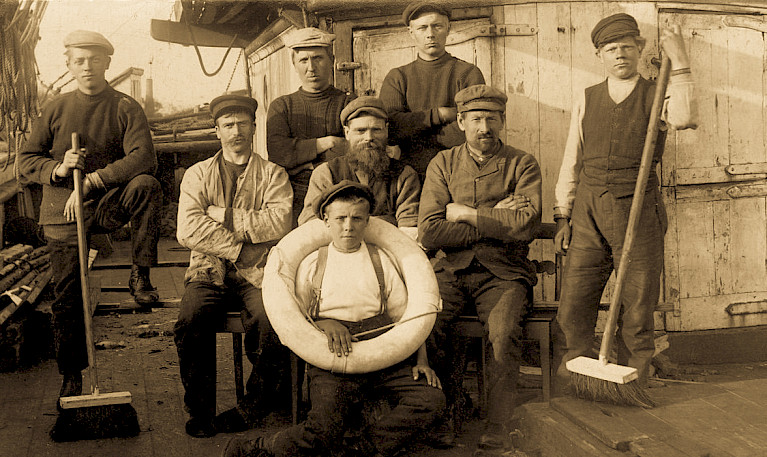
purjelaivojen aika
A seaman’s life
Seafarers were a minor group in the Middle Ages. Ships were small and voyages short. Crews usually consisted of men mainly from the same area. This affected the hierarchy: the Master had less authority than later on in history. They often shared the commercial risk as well; their wages were bound to a share of the profit, and so the crew could participate in decision-making. The seafarers resembled the urban trade guilds rather than industrial labourers later on. This model prevailed in costal traffic and in fishing until the end of the sailing ship era.
The work on sailing ships was reasonably well paid, but very hard and dangerous
The seafarer’s status changed in Finland in the early 18th century, when the voyages became longer. The crews became paid labour; the Master’s authority was absolute and could not be questioned. Meanwhile, the sailor’s trade largely became a brief period in young men’s lives. It was common that they sought other work on land in a few years. Certainly, there were always men with a long seafaring career.
Up to the end of the sailing ship era, a seafarer’s wages were reasonable, compared with unskilled agricultural worker’s wages. On the other hand, the discipline was hard, accommodation was congested and food was insufficient and worthless at worst. One was compelled to share life with workmates for long times. The daily working hours were 12 in principle, even more in practice. The work was also highly dangerous.
Going to sea was an opportunity to social mobility unlike most other alternatives. For instance a son born in an unlanded family after the mid-19th century had few openings for earning. The countryside only offered job as poorly paid and poorly valued farm-hand. Going to sea meant striving for something more, as a skilled young man could advance to be mate, eventually even captain, irrespective of his origin.